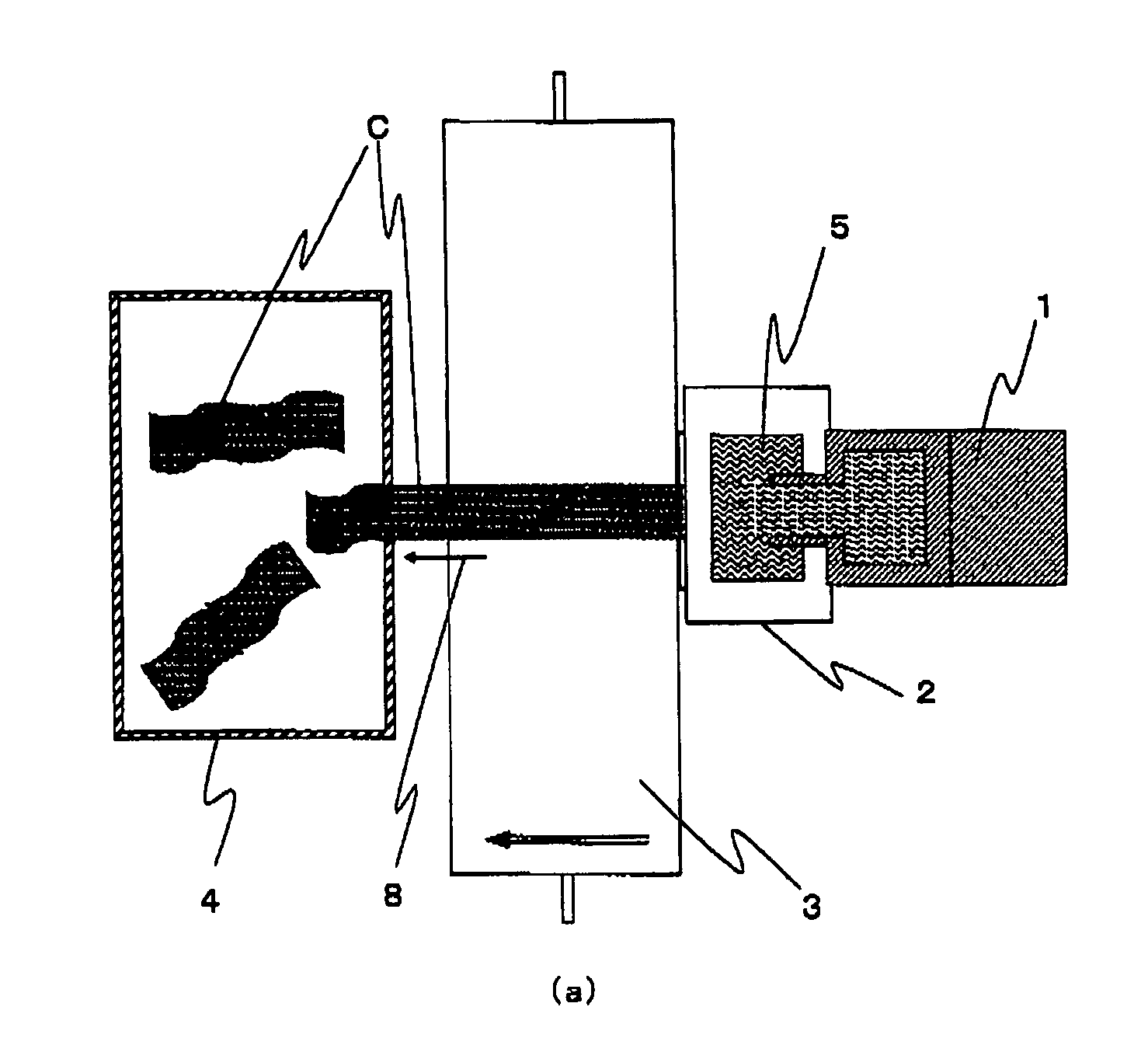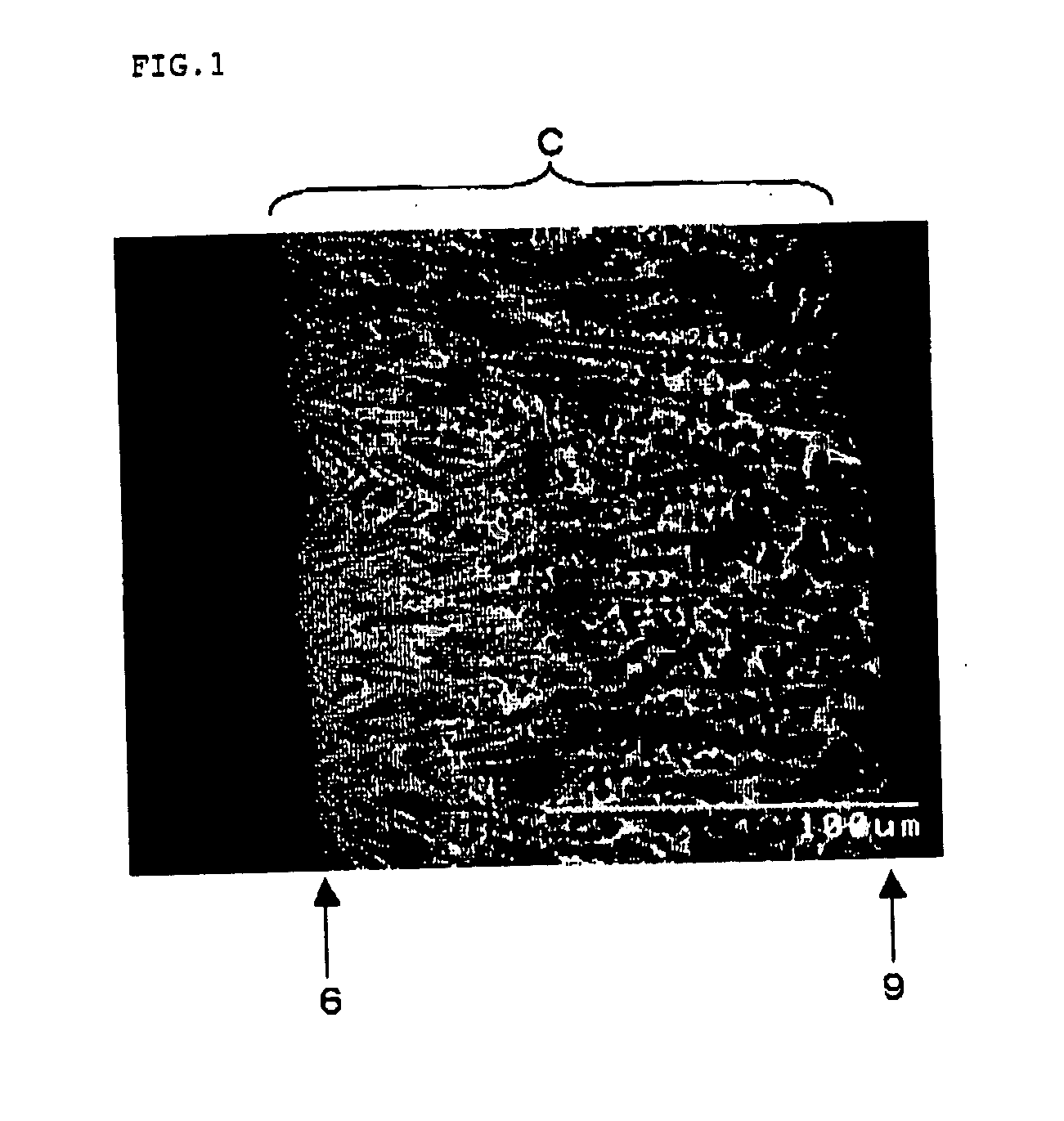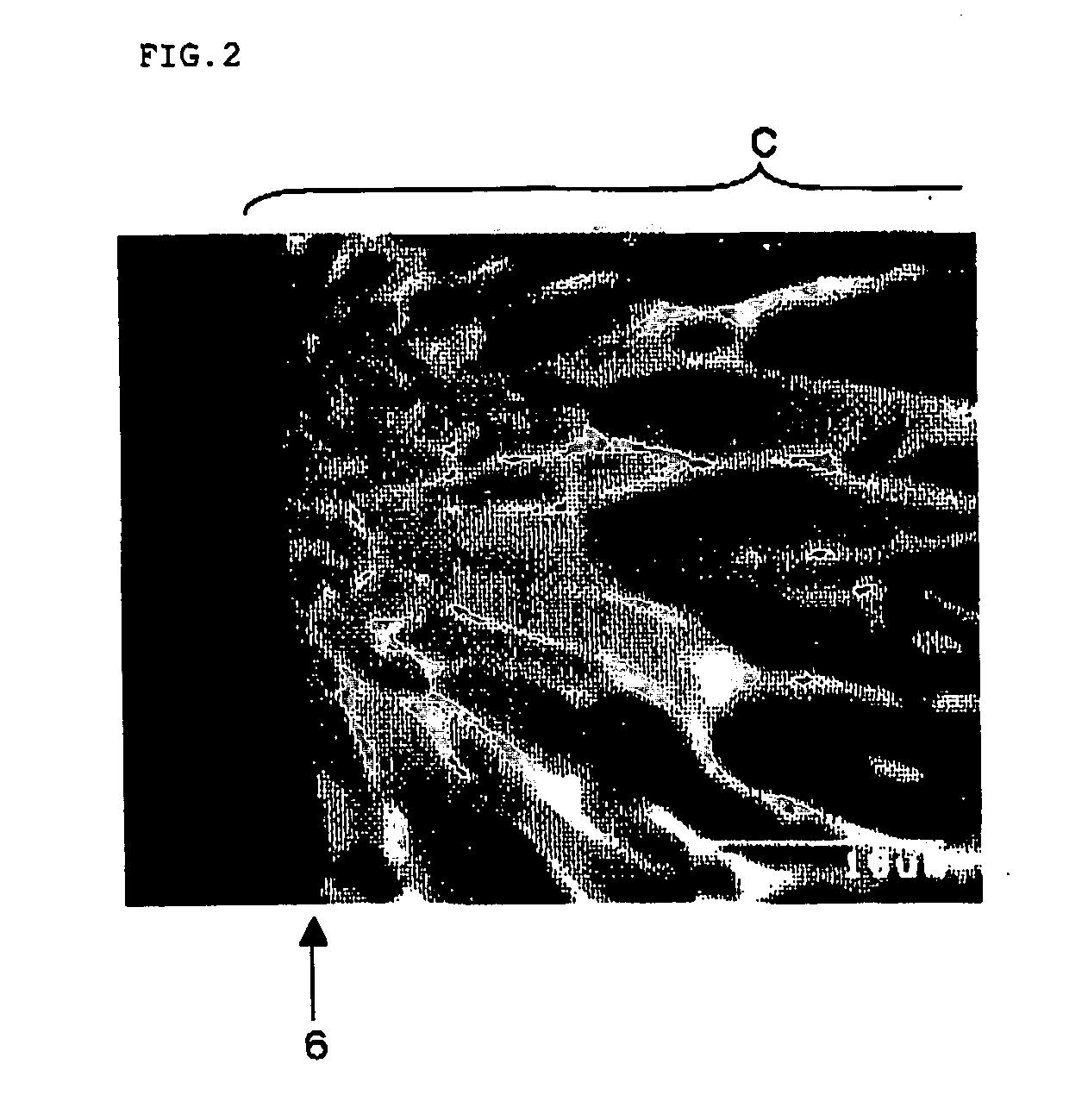Alloy for negative electrode of lithium secondary battery
a secondary battery and negative electrode technology, applied in the field of alloys for negative electrodes of lithium secondary batteries, can solve the problems of non-carbon materials and insufficient satisfaction, and achieve the effect of large electric charge and discharge capacity and good charge and discharge cycle properties
- Summary
- Abstract
- Description
- Claims
- Application Information
AI Technical Summary
Benefits of technology
Problems solved by technology
Method used
Image
Examples
example
[0118] Into a crucible comprising double layer structure of carbon and alumina were put 210 g of tin metal (2N {purity of 99%}), 455 g of silicon metal (4N {purity of 99.99%}), and 35 g of electrolytic copper, and were heated at 1400° C. in the presence of argon in a high frequency induction furnace to prepare melt. With an apparatus for strip cast method comprising units as shown in FIG. 3 to FIG. 5, the melt was rectified, spread like a strip, and touched on a cooling roll for rapidly cooling to be cast into a strip cast alloy. The cooling roll made from copper rotated at 1.0 m / sec in peripheral velocity, thickness of the strip cast alloy was 300 μm, and a cooling rate from melt temperature to 600° C. was 3000° C. / sec.
[0119] The obtained strip cast alloy was crushed in an alumina mortar into powder to be analyzed with X-ray diffraction method. The diffraction peaks corresponding to Sn metal and Si metal were respectively identified. The cross section of alloy closed up with a sca...
PUM
| Property | Measurement | Unit |
|---|---|---|
| Percent by mass | aaaaa | aaaaa |
| Percent by mass | aaaaa | aaaaa |
| Thickness | aaaaa | aaaaa |
Abstract
Description
Claims
Application Information
 Login to View More
Login to View More - R&D
- Intellectual Property
- Life Sciences
- Materials
- Tech Scout
- Unparalleled Data Quality
- Higher Quality Content
- 60% Fewer Hallucinations
Browse by: Latest US Patents, China's latest patents, Technical Efficacy Thesaurus, Application Domain, Technology Topic, Popular Technical Reports.
© 2025 PatSnap. All rights reserved.Legal|Privacy policy|Modern Slavery Act Transparency Statement|Sitemap|About US| Contact US: help@patsnap.com



